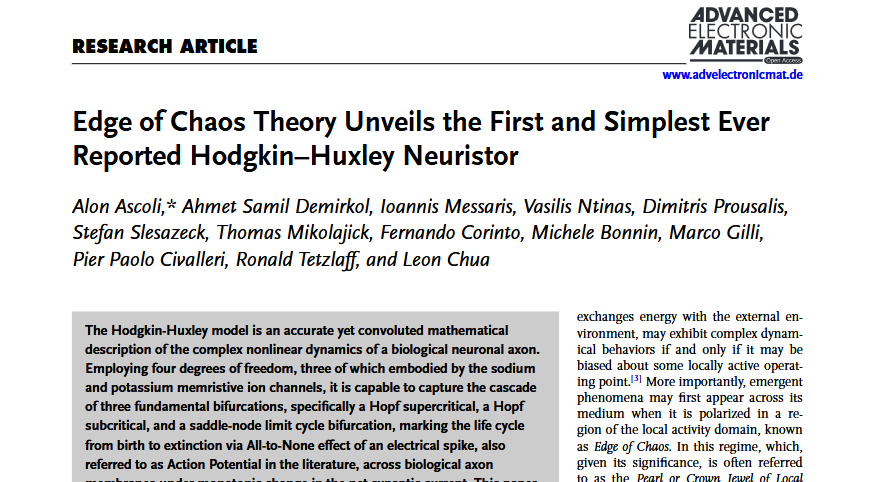A recent study published in Advanced Electronic Materials introduces a groundbreaking electrical cell that leverages a single memristor operating at the edge of chaos. This innovative approach enables the cell to reproduce complex behaviors observed in biological neurons, marking a significant advancement in neuromorphic engineering.
Key Highlights:
- Edge of Chaos Operation:
The memristor functions at the boundary between order and chaos, a regime known to facilitate complex computational capabilities akin to biological systems. - Simplified Architecture:
Utilizing just one memristor, this design simplifies the hardware requirements for emulating neuronal behavior, potentially leading to more efficient and compact neuromorphic circuits. - Implications for Neuromorphic Computing:
This development could pave the way for more efficient artificial neural networks, enhancing machine learning and artificial intelligence applications by mimicking the intricate dynamics of the human brain.
The research underscores the potential of edge-of-chaos dynamics in developing more efficient and biologically realistic computing systems. By harnessing this principle, future technologies may achieve higher levels of adaptability and intelligence, bridging the gap between artificial and natural information processing.
For a comprehensive understanding of the study and its implications, you can access the full article here: https://advanced.onlinelibrary.wiley.com/doi/full/10.1002/aelm.202400789


